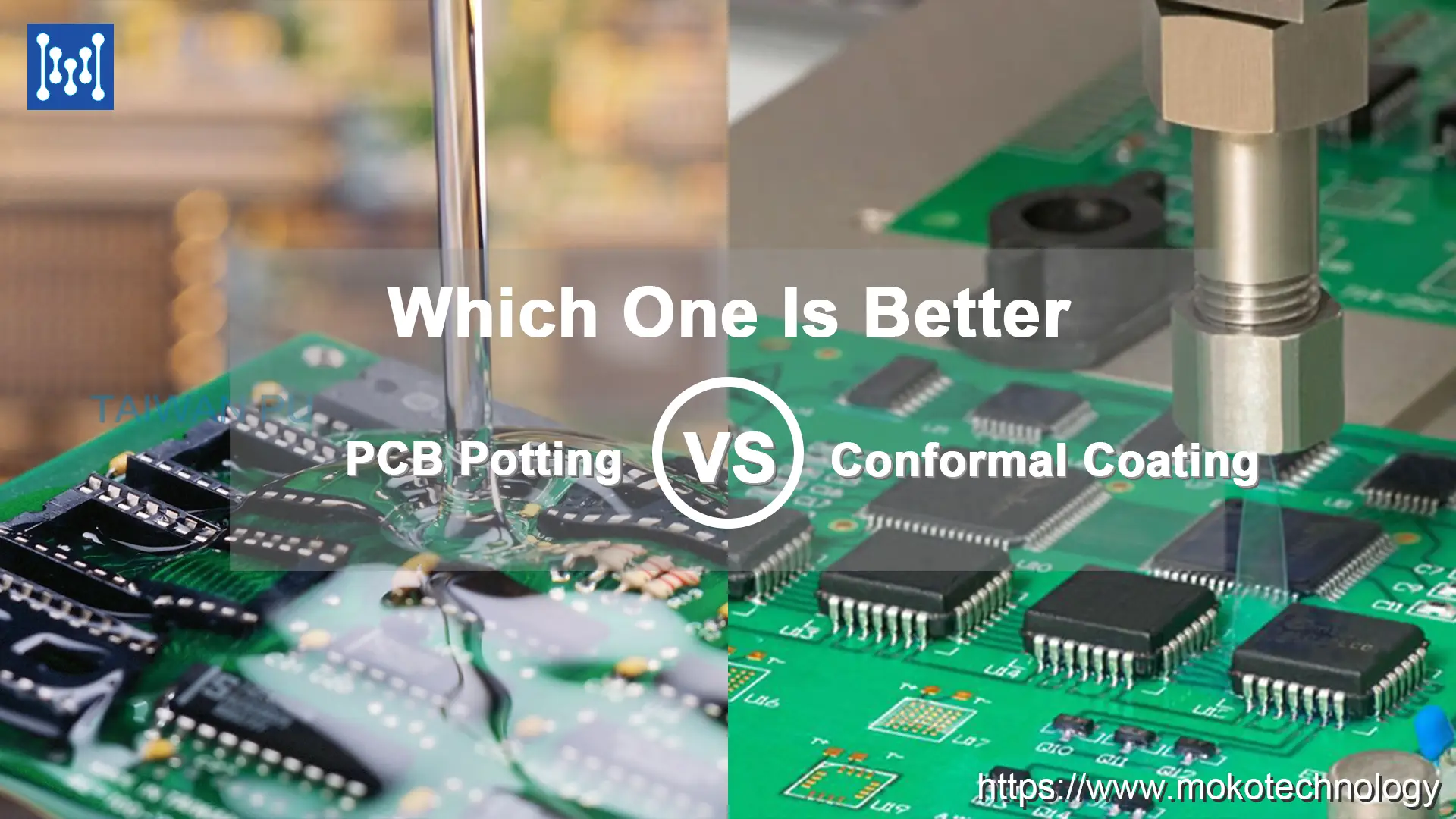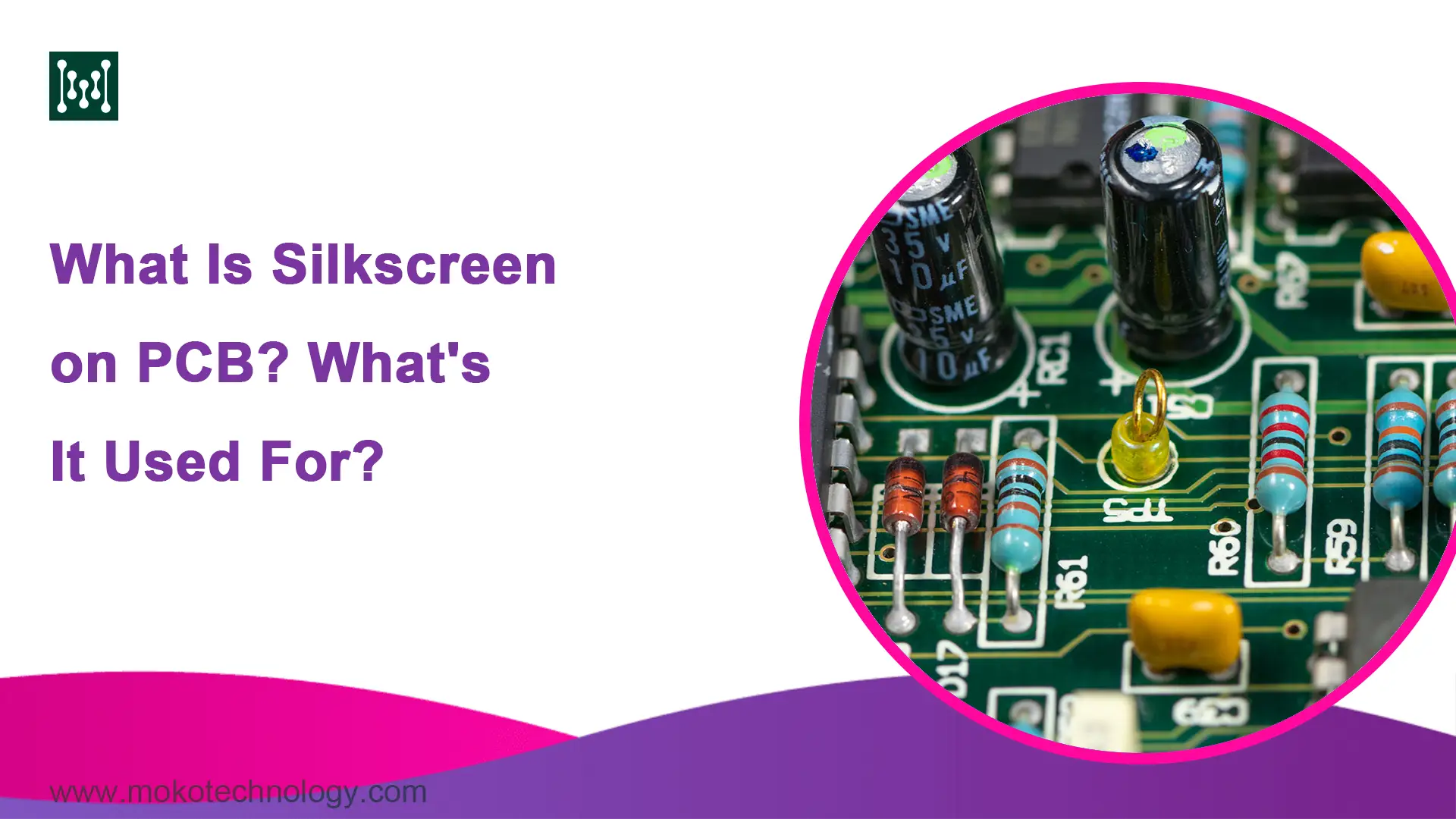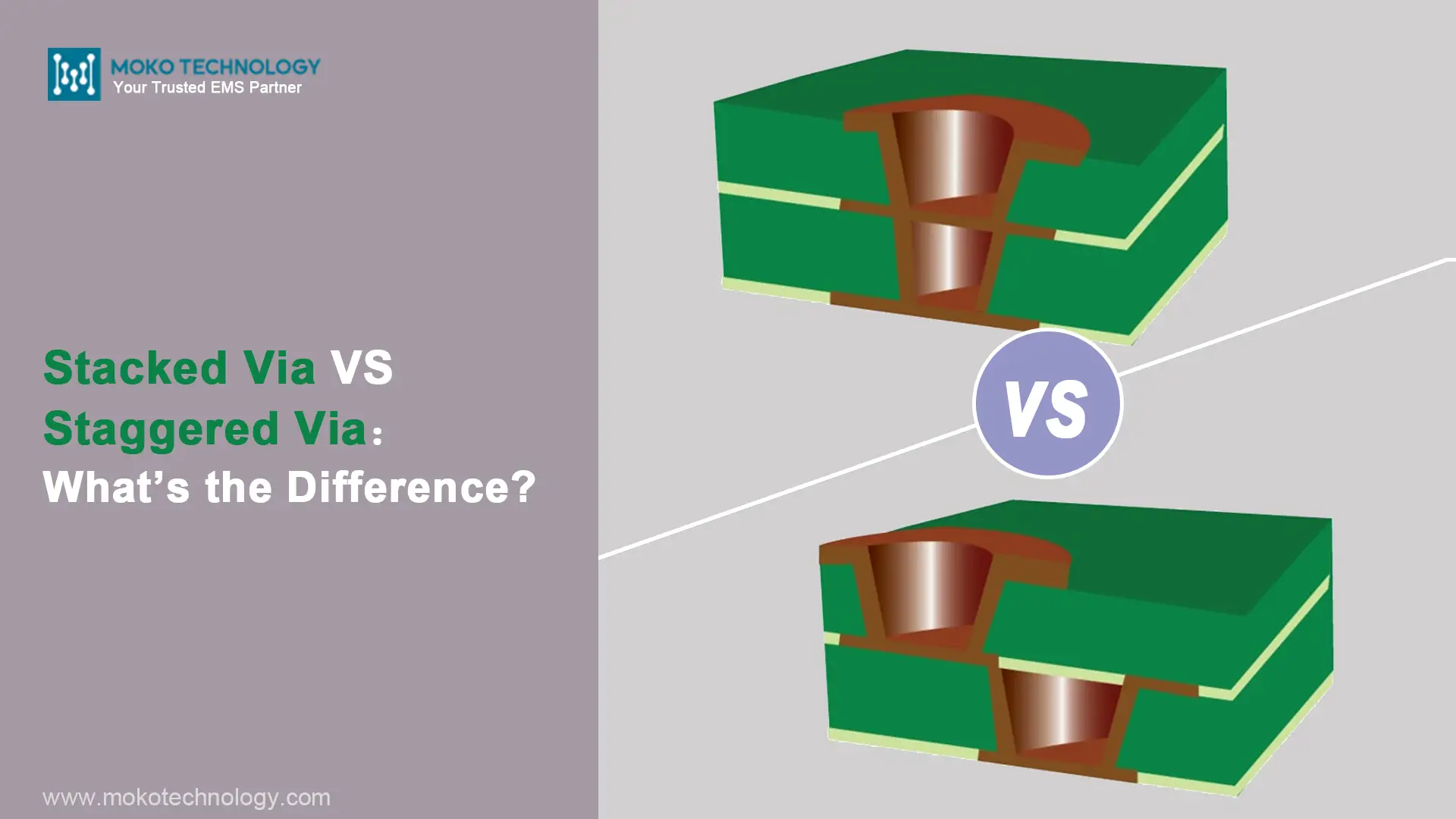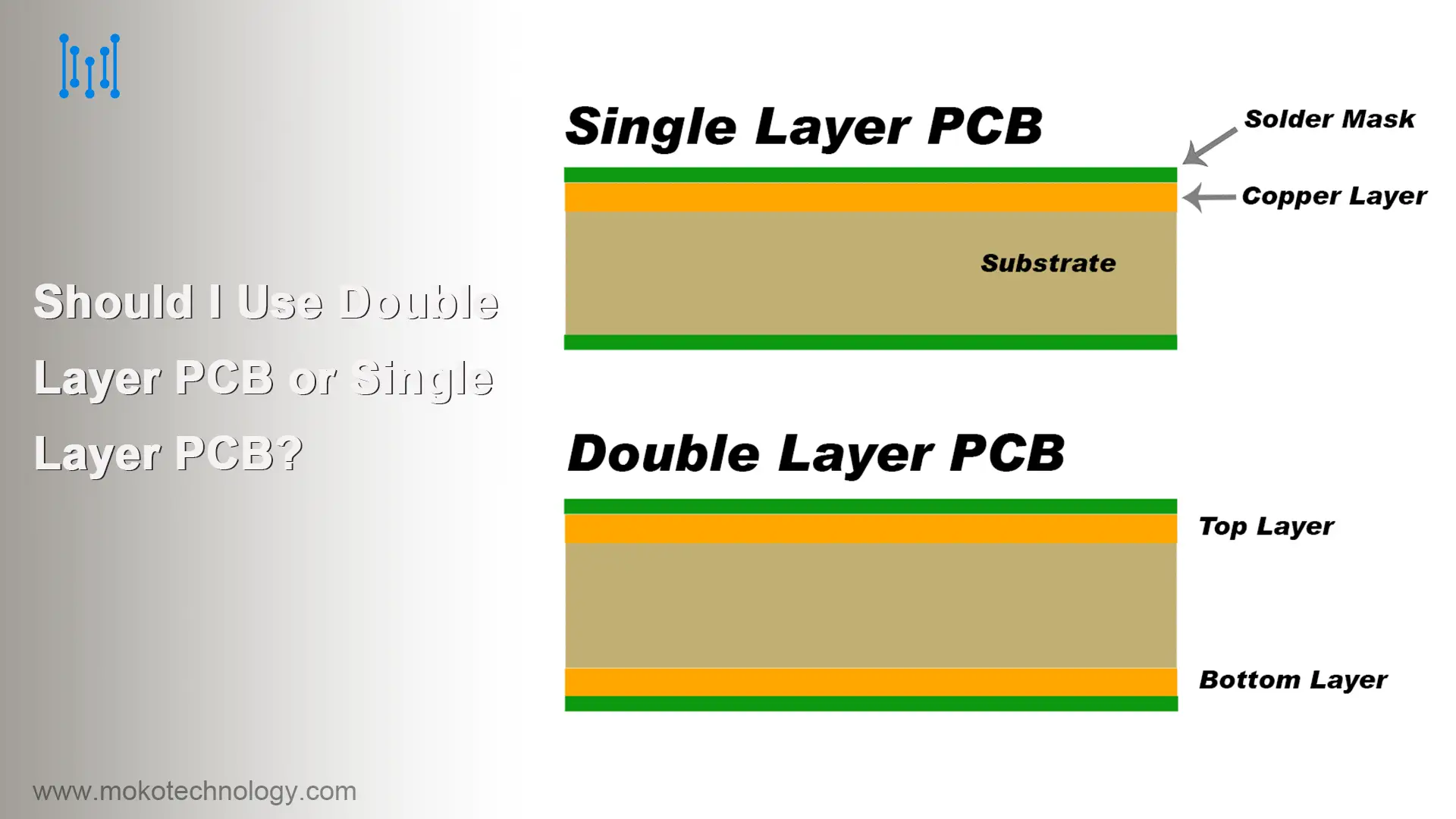Why Is Potting or Conformal Coating Necessary for PCB?
Potting and conformal coating are necessary technologies for PCB fabrication, which keep PCB away from unfavorable factors such as humidity, chemicals, and heat. As we all know that the surface of PCB is covered with amounts of components including diodes, capacitors, fuses, and resistors, etc. Each electronic component plays a vital role to make the whole PCB workable, any one of them is damaged, which may cause the failure of the entire PCB board. Especially in the harsh environment, such as extremely high temperatures, excess humid or cold may cause the problem of decomposition, low insulation resistance, and conductor corrosion, in the end, the lifespan of PCB components would be decreased. Thus, we have to do something to protect them and maintain the long-term use of those components in PCB. But how? Well, it’s time for potting&conformal coating to show how useful they are.
The function of potting and conformal coating is the same, and both of them apply organic polymers that provide chemical&thermal resistance and electrical insulation as well. But there are some differences between each other, for your better understanding, we would show more detailed information as below.
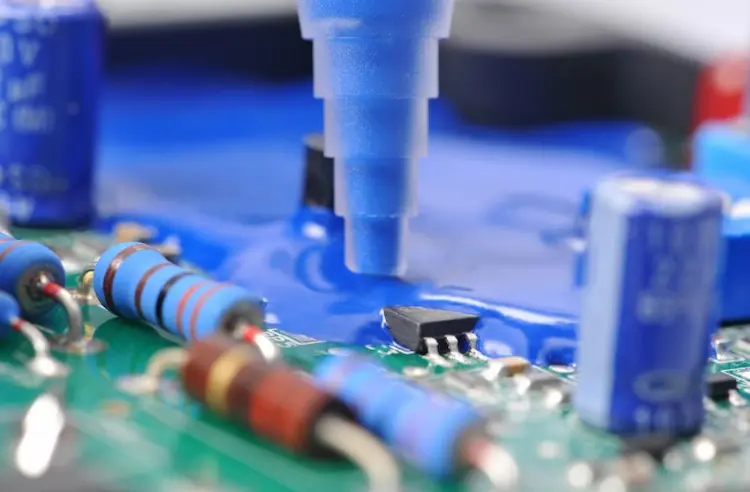
What Is PCB Potting?
Potting, also known as “encapsulation”, is a method to seal the PCB within a thick layer of resin which provides strong protection against physical shock and harmful chemicals, meanwhile, this process will enhance the electrical performance. To achieve this, the first step is to place the printed circuit board assembly in an open pot and then pour liquid compound into it until the whole PCBA is covered completely. The liquid contains some hardener to accelerate the curing, and when the liquid solidifies and forms, it can play a good protective role. Normally, the resin used is dark-colored, which makes it difficulty for us to see the board underneath it.
Commonly Used Potting Materials for PCB
There are several materials commonly used for potting printed circuit boards:
One option is epoxy, which is a durable material with great chemical resistance and high adhesion strength. However, epoxies require a long time to fully cure and set.
Polyurethane is another choice – it is softer and more pliable than epoxy. This makes polyurethane useful for protecting fragile electronic components that may not work well with rigid potting compounds. However, polyurethane tends to have lower heat and moisture resistance compared to some alternatives.
Silicone can also be used for potting PCBs. It is extremely flexible and can withstand extreme temperatures. The downside is that silicone tends to be more expensive than other potting materials, so it may not be practical depending on the application.
Various materials have different pros and cons that should be considered, choosing the right material is determined by applications. For example, silicone and epoxy are perfect for the circumstances under high temperatures; however, urethane would have the better protection performance to chemicals. So the key point that we should notice when selecting the material is that we need to have a clear thought about what kind of protection we want to achieve.
How to Remove Potting from PCB?
Sometimes it becomes necessary to remove the potting material to repair or modify the PCB. This can be challenging, but there are a few methods that may work:
Mechanical Removal – Carefully use small flathead screwdrivers, picks, or dental tools to chip away at the potting material. Go slowly to avoid damaging circuit components. This works best on soft potting compounds like silicone and polyurethane.
Thermal Removal – Heat guns, hot air stations, or small torches can soften and melt certain potting materials like thermoplastics. Use gentle heat and pry the material away as it softens. Don’t overheat the PCB.
Chemical Removal – Specific solvents can dissolve and remove some potting compounds. Check chemical compatibility first to avoid damaging the PCB. Allow adequate ventilation when using solvents.
What Is Conformal Coating?
As to conformal coating, it is another technology for protecting the PCBA by coating a thin and non-conductive layer on the circuit board and electronic components, the process can be operated manually and automatically as well. Featured with lightweight and thinness(usually, the coating is only 25 to 250 microns thick), this technology will not add weight and thickness to PCB assembly.
5 Types of Circuit Board Conformal Coating
There are kinds of circuit board conformal coating for our options in terms of the materials used, the most popular types are Acrylic Conformal Coatings, Epoxy Conformal Coatings, Polyurethane Conformal Coatings, Silicone Conformal Coatings, and Parylene, which have their own advantages and disadvantages. For instance, the Acrylic Resin is characterized by a fast curing time of about 30 minutes, but it can only bear a temperature below 125℃. The epoxy coatings are extremely tough and durable, while it would be very difficult to repair. While the Parylene is the thinnest which can withstand extremely high temperatures, available for any surface, but very difficult to rework.
How to Apply Conformal Coating?
There are 3 methods to apply conformal coating include dipping, brushing, and spraying. Dipping is the method that people need to dip the whole board into the coating but it requires high proficiency to avoid the leaking problem, currently, not many PCBs apply this way due to the design problem, but if engineers consider the dipping way when design, then, dipping can be a great method for high volume fabrication. Brushing and spraying are suitable for low volume manufacture, the spraying is done by spray aerosol or spray gun. And the next procedure is curing by air, oven, or UV light.
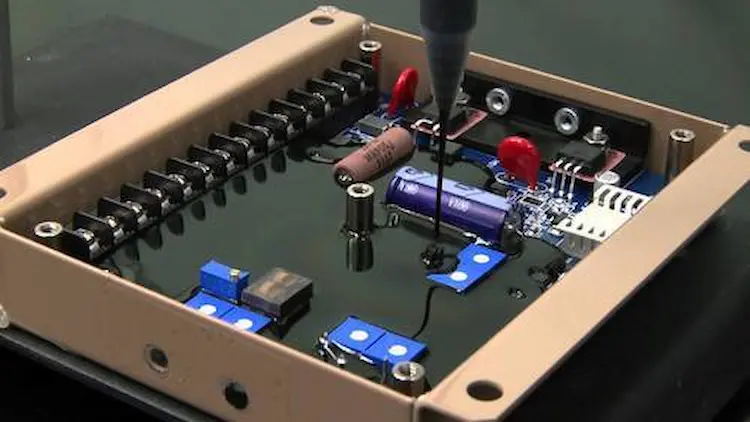
The Pros and Cons of PCB Potting & Conformal Coating
Since now we are already familiar with the basic knowledge about potting and conformal coating, you may wonder which one is better? Potting or conformal coating? Well, this is not an easy question to answer, we cannot completely deny or admire a thing, on the contrary, we need to use a dialectical method to understand it. Both of them have pros and cons, let’s check the below chart for details:
| Type | Pros | Cons |
|
Potting |
great protection performance | hard to inspect or rework |
| high-volume work | increased weight and thickness | |
| VOC-free options available | more complicated application process | |
|
Conformal Coating |
thin&light weight | less protection for heavy-duty shock |
| multiple application methods | contains less VOCs | |
| visible components | without reverse engineering protection |
When reading here, we have a good understanding of the strengths and weaknesses of potting and conformal coating. Here comes another question: When should we use potting and when should use conformal coating for PCBA? Let’s read on, and trust me, you will get the answer.
When should We Use Potting
As mentioned above, potting is featured with excellent protection performance, so if the device or application scenario needs to withstand strong physical shock, abrasion, chemicals, high temperature, and moisture, potting is a great choice as it has the function of vibration damping as well. On the other hand, potting can protect engineering privacy thanks to the colored resin, it would be difficult for other people to observe the underneath board and make a profit from it. But actually, this is a double-edged sword, the invisibility would bring obstacles when the repair or reworking is needed. Potting is also suitable for high-volume work due to it can be done fast on an assembly line. Last, PCB potting offers a good aegis against electrical arcs, so if the electrical devices are high-voltage, we would recommend you to use potting instead of conformal coating.
When should We Use Conformal Coating
Conformal coating is much popular in PCB manufacturing, even though it may not suitable for those applications which require the capacity to bear the high physical shock and intensive abrasion, it is widely used in many industries such as automotive, medical, aerospace&defense, and electronics. As the conformal coating can withstand extreme temperatures, high humidity, and toxic chemicals. One other highlight of conformal coating is its flexibility that is lightweight, thinness which won’t take much space, which helps it to seize the market share of electronics. In recent years, the electronics industry is developed amazingly, which has become the top industry that uses conformal coatings the most. The conformal coating is the best choice for these mobile and handheld devices such as smartphones which require small size and lightweight.
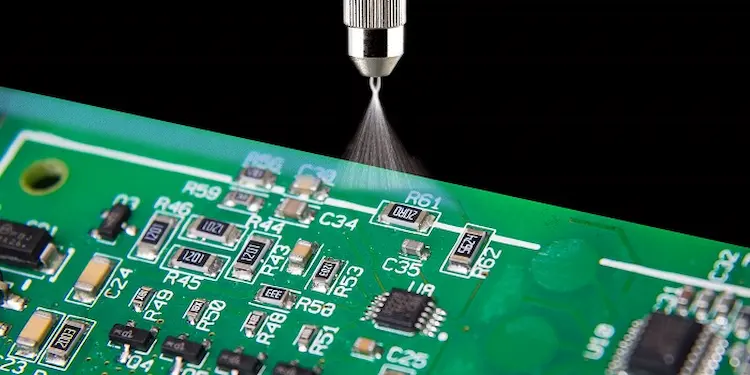
Conclusion
Both conformal coating and potting are must-have technologies if we want to lengthen the lifetime of PCB and reduce the cost caused by repair. But we really need to think carefully to select a more suitable technology for our PCB project as potting and conformal coating are complex processes, full of variables that may impact the final effect and cost. If you still have some doubts about it, you should go to consult some experts, they would make the right choice after considering all aspects of your project, application, budget, turnaround time, etc. MOKO is committed to offering the best one-stop PCB&PCBA service for our customers, our R&D team is much professional in this area with experience of over a decade, so please feel free to connect with us if you have any queries. Let’s have an in-depth conversation about your project!
